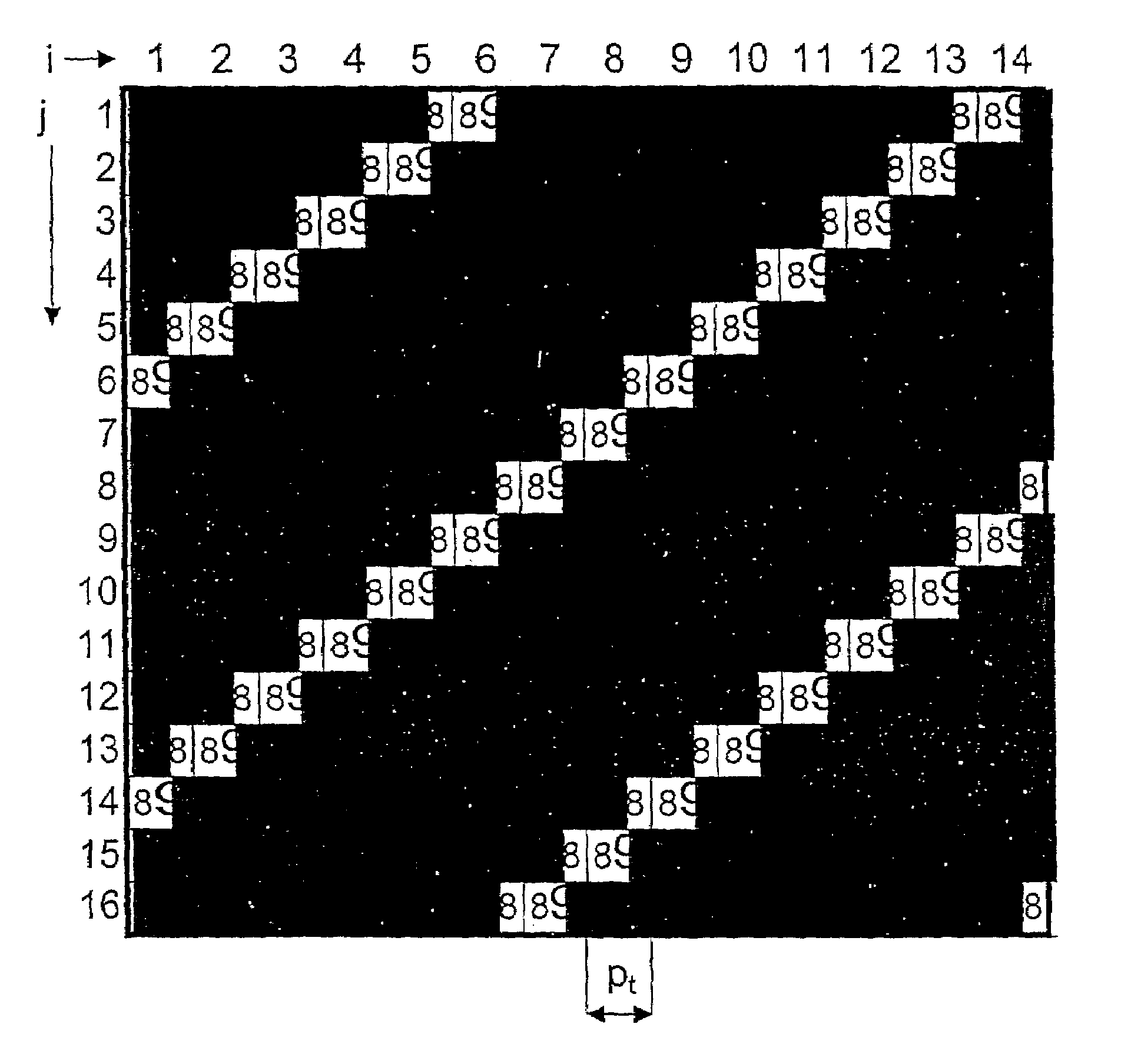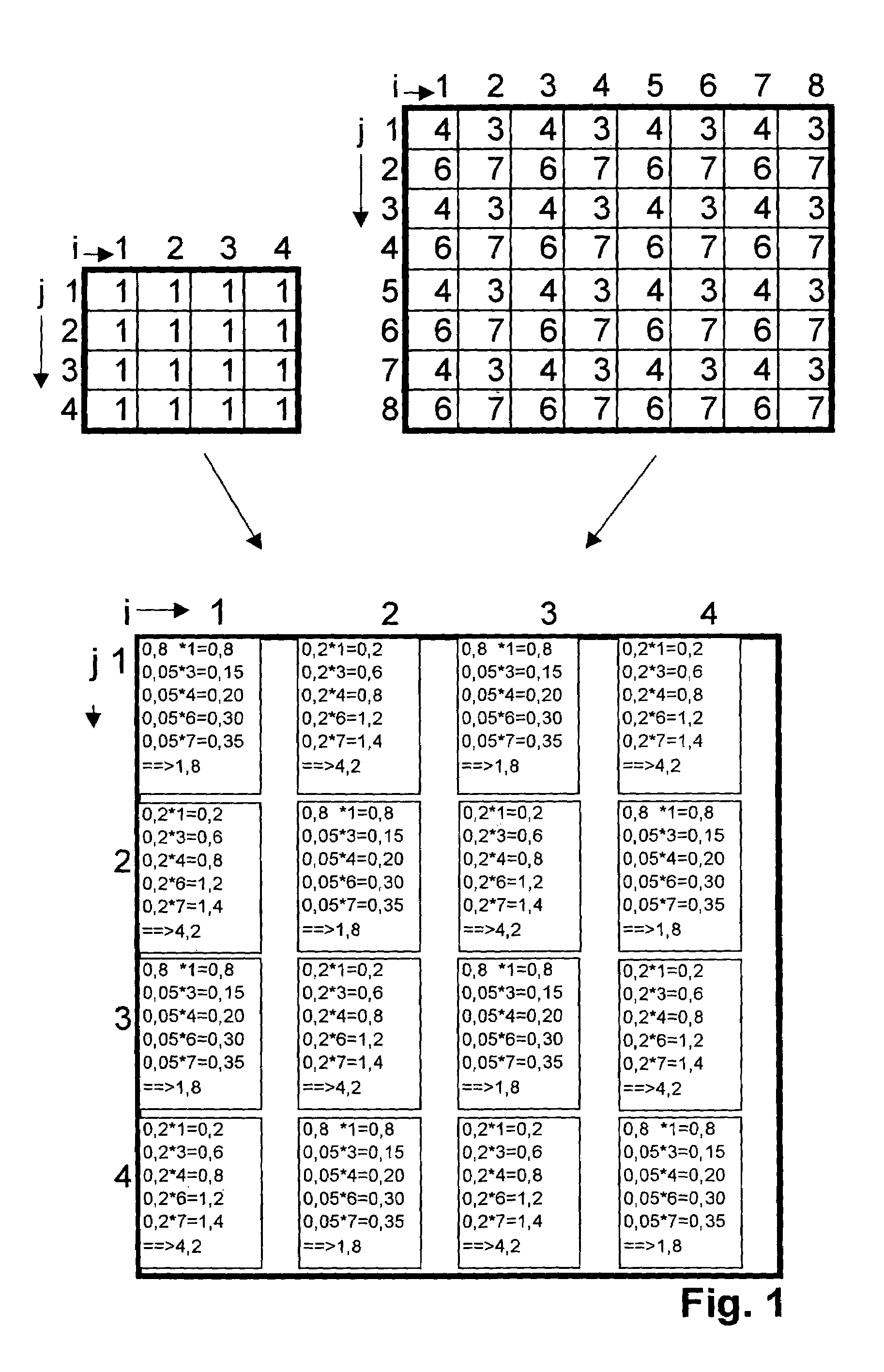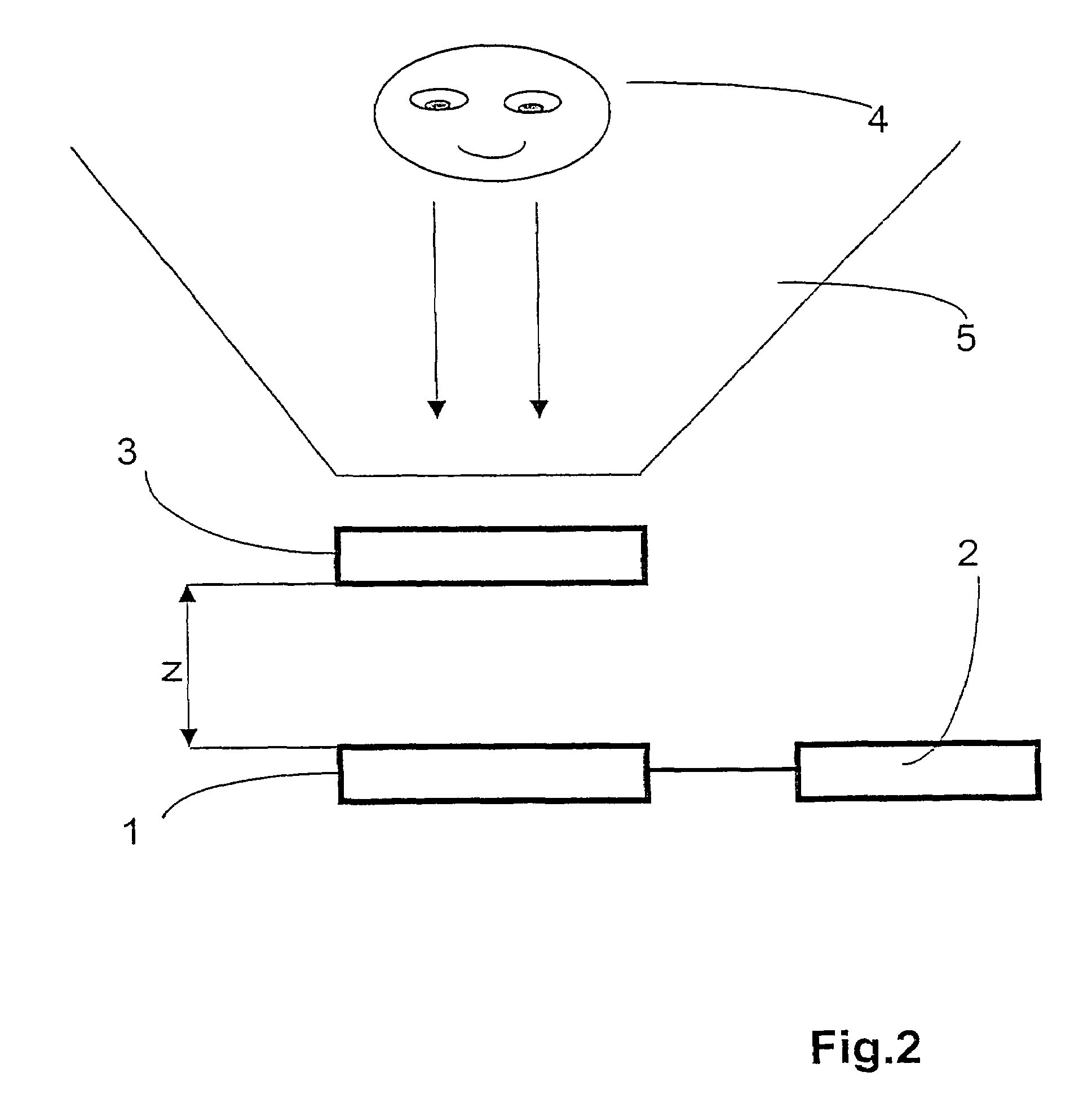Method for auto-stereoscopic image display with a wavelength filter array
auto-stereoscopic technology, applied in the field of auto-stereoscopic image display with a wavelength filter array, can solve the problems of affecting limiting the maximum number of views that can be displayed, and in most cases, affecting the resolution of perspective images, so as to achieve the effect of improving the quality of three-dimensional visualization
- Summary
- Abstract
- Description
- Claims
- Application Information
AI Technical Summary
Benefits of technology
Problems solved by technology
Method used
Image
Examples
Embodiment Construction
[0006]Proceeding from the prior art as described, it is the objective of the invention to improve the quality of image rendition in a method of three-dimensional visualization.
[0007]According to the invention, the objective, in a method of the type described above, is achieved by allocating bits of partial information from at least two different views at a time to at least one image rendering element, this allocation being effected in such a way that the wavelength of the partial information is always equal to the wavelength, or lies in the wavelength range, of the light emitted by the allocated image rendering element.
[0008]If bits of partial information from different views are simultaneously rendered by at least one image rendering element, more views can be used with an image display device of a particular resolution. A greater number of views corresponds to a denser staggering in spatial depth or in perspective, so that the three-dimensional impression is improved. Moreover, th...
PUM
 Login to View More
Login to View More Abstract
Description
Claims
Application Information
 Login to View More
Login to View More - R&D
- Intellectual Property
- Life Sciences
- Materials
- Tech Scout
- Unparalleled Data Quality
- Higher Quality Content
- 60% Fewer Hallucinations
Browse by: Latest US Patents, China's latest patents, Technical Efficacy Thesaurus, Application Domain, Technology Topic, Popular Technical Reports.
© 2025 PatSnap. All rights reserved.Legal|Privacy policy|Modern Slavery Act Transparency Statement|Sitemap|About US| Contact US: help@patsnap.com



